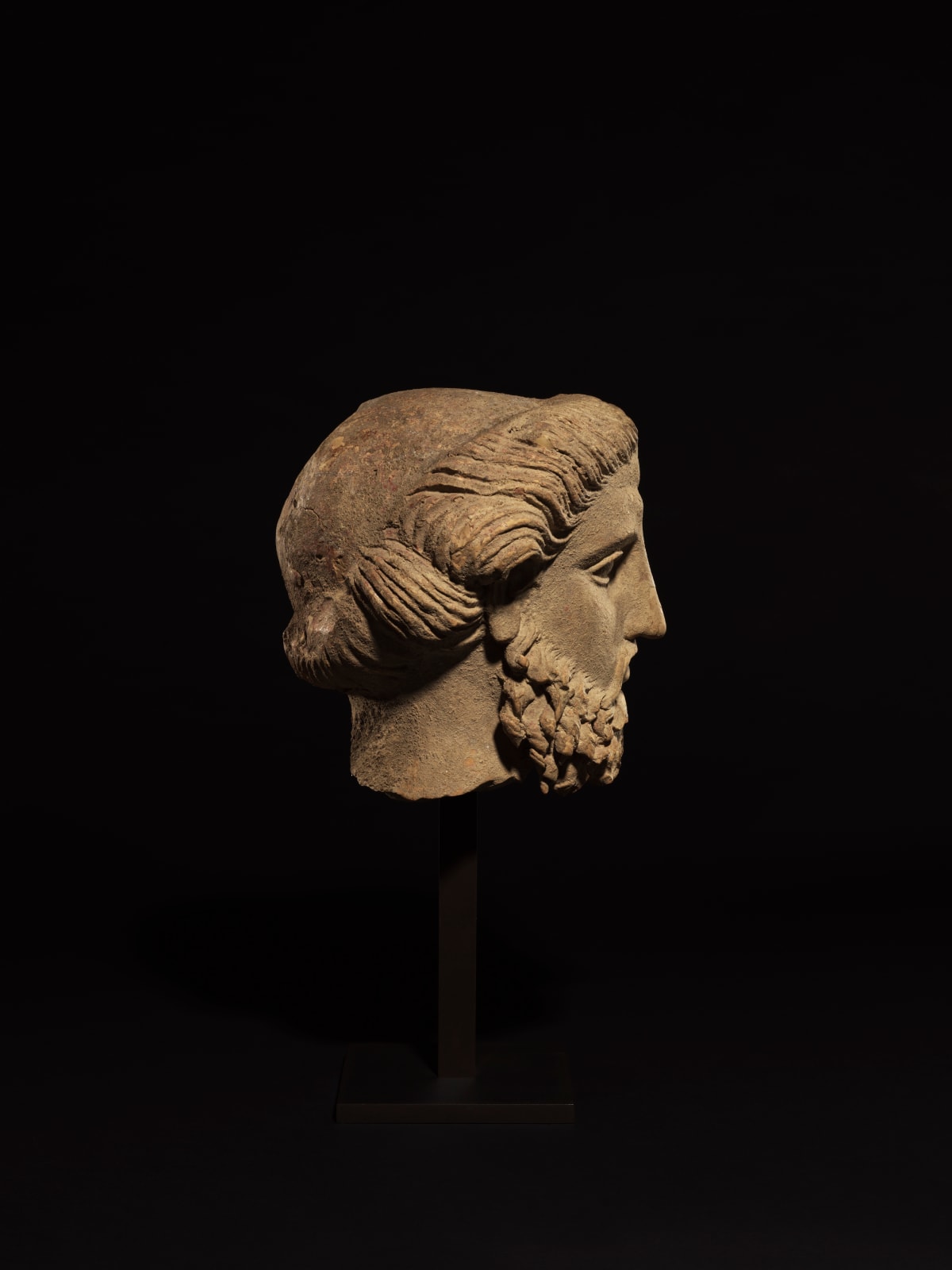-
Artworks




SOUTH ITALIAN GREEK
Fragmentary Head of a Bearded God, South Italian Greek, c. 4th century BCTerracotta, with traces of polychromy; on a modern wood and metal base27.5 cm (10 ⅞ in.) high
47.5 cm (18 ¾ in.) high, overallFurther images
The present sculpture is a life-sized head representing a male god. He is depicted with centrally parted hair, with upswept locks rolled back over the tops of his ears and...The present sculpture is a life-sized head representing a male god. He is depicted with centrally parted hair, with upswept locks rolled back over the tops of his ears and behind them. His almond-shaped eyes and thick, contoured lids confront the viewer with a calm, forward gaze. The brows are slightly arched, merging with the bridge of a long, straight nose, its tip overhanging the downturned moustache. The full lower lip protrudes and is surrounded by an ample beard, comprising individual locks assembled into corkscrew curls. Some original pigment survives in the hair, especially at the back.
This head illustrates the vigorous independent tradition of Italic Greek sculpture, differing from contemporary mainland Greek representations of gods in several important ways. Perhaps most notably, the treatment of the hair is archaicising; the long hair combed back from the face and tied in a chignon is a coiffure characteristic of the Archaic Greek style, and the parallel curls of the beard are also out of phase with the more realistic style prevalent in the later fifth and fourth centuries BC of mainland Greece. The facial features, however, are contemporary, resembling those typical of the early fourth century BC.
The prototype for this figure would most likely have been made in bronze, with the ringlets of the beard cast separately and attached. The replication of this effect in terracotta is quite remarkable, and attests to the high level of skill and specialisation of Tarentine workshops of the period.Provenance
With Dr. Herbert A. Cahn, Münzen und Medaillen A.G., prior to 1981.
With André Emmerich, New York, 1981.
Hesperia Arts Auction, New York, 27 November 1990, lot 48.
With Royal-Athena Galleries, New York, 1991.
Collection of Frank H. Pearl (Washington, DC), 1991-2012.
His posthumous sale, Christie’s, New York, Antiquities, 5 December 2012, lot 158.
Jean-Louis Domercq.
Private Collection (USA), 2013-2023.
Literature
André Emmerich Gallery, Inc., Classical Antiquities: An exhibition organized in cooperation with Dr. Herbert A. Cahn,
Münzen und Medaillen A.G., Basel and Derek Content Inc., Crow Hill, Houlton, Maine. exh. pamphlet,
November 14 – December 30, 1981 [reproduced].
Royal-Athena Galleries, Art of the Ancient World, vol. VI, part II (1991), no. 55.
2of 2







